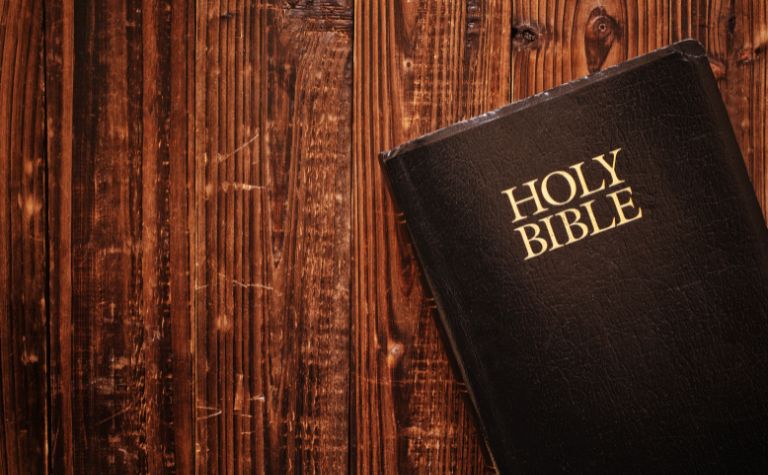The Bible is essential to the Catholic and Lutheran branches of the Christian faith. Historically, both traditions read Scripture regularly, base their teaching and theology on it, and read and preach from it during corporate worship. Yet Lutheran and Catholic Bibles aren’t the same.
The Catholic Bible includes books in the Old Testament that the Lutheran Bible doesn’t, called the Apocrypha or Deuterocanonical writings. These writings consist of individual books (e.g., The Wisdom of Solomon) and additions to accepted books (e.g., Bel and the Dragon as the 14th chapter of Daniel).
Why does the Catholic Bible contain the Apocrypha or Deuterocanonical writings while the Lutheran Bible doesn’t? Who decided to include those books in the Catholic Bible but not in the Lutheran one? Keep reading to learn more.

What is the Apocrypha (or the Deuterocanon)?
Catholic scholars prefer the term “deuterocanonical,” which means “second canon,” to the term “Apocrypha.”
This preference is because the term Apocrypha, from the Greek word for “hidden,” has negative connotations that Catholic scholars dislike. (Also see What Bible Translation Do Lutherans Use?)
In some contexts, “Apocrypha” is synonymous with terms like false and fictitious. For example, protestants often use the term Apocrypha over Deuterocanon because they don’t believe the writings are canonical.
What is the canon? The word “canon” describes the officially accepted list of books that belong in the Bible. The term canon refers to a measuring rod, and to be in the canon implies that a book passed the test or was successfully measured and considered worthy of inclusion.
| Deuterocanonical | Apocrypha |
|---|---|
| Meaning: from Latin, meaning “second canon” | Meaning: from Greek, meaning “hidden” |
| Refers to: certain books written between the Old and New Testament that are included in the Septuagint (i.e. the Greek Old Testament) and the Catholic Bible | Refers to: certain books written during the intertestamental period included in the Septuagint and the Catholic Bible; the term “Apocrypha” is also used to describe certain books written in the 2nd century after Christ, which aren’t included in the New Testament |
| Term: preferred by Roman Catholicism | Term: used by Protestants |
What is the Septuagint? The Septuagint is the Greek translation of the Hebrew Bible, i.e., the Christian Old Testament. The translation was produced in the 3rd century before Christ.
According to tradition, the prefix “sept” refers to 70, which is the number of translators who worked on the project. The Apocrypha or deuterocanonical books were included in the Septuagint but weren’t part of the Hebrew Bible.
| The Books of the Apocrypha |
|---|
| Tobit |
| Judith |
| Ecclesiasticus |
| Baruch (including the Epistle of Jeremiah) |
| Wisdom of Solomon |
| 1 and 2 Maccabees |
| Additions to Esther |
| Additions to Daniel |
When Were the Apocryphal Books Added to the Catholic Bible?
The Apocrypha or Deuterocanonical books trace their origin to the Septuagint, a Greek translation of the Old Testament that a group of scholars wrote around the 3rd century B.C. in Egypt.
Though the early church rejected these writings, the scholar Jerome translated the Apocrypha and the Old and New Testament into Latin in the 4th century A.D. Jerome’s translation is called the Vulgate.
Jerome was among the first to translate directly from the Hebrew Masoretic text instead of the Septuagint. Although he included the books of additional writings in his translations, he did not consider the books to be canon. (Also see Do Lutherans Speak in Tongues?)
The Catholic Church has decided that the updated version of Jerome’s translation is the only official translation of the Bible. Therefore, in Latin-only services, this is the version that the priests and congregants use in their liturgy.
However, services in English utilize several different translations, such as the New American Bible, the Jerusalem Bible, and the Catholic version of the New Revised Standard Version.
These versions employ a range of translation philosophies, but they all include the additional seven books from the Apocrypha.
The Greek Orthodox Church, which has many similarities to Roman Catholicism, also includes other books from the Apocrypha. [1] (Also see Lutheran vs. Non-Denominational: What’s the Difference?)

Why Didn’t Martin Luther Accept the Extra Books?
Martin Luther did not accept any extra books as Scripture for similar reasons that other church leaders throughout history have rejected them. (Also see What Do Lutherans Believe About Mary?)
The earliest records of Christianity, with a few exceptions, show the early church did not view the books of the writings as Scripture.
In the third and fourth centuries, other theologians weighed into the conversation. Augustine and others accepted some of the writings as Scripture and used them to establish theology.
Another factor is that in Luther’s time, only Greek translations of the Apocryphal books existed. So people assumed, perhaps rightly, that most of the books, that the authors wrote them originally in Greek. (Also see Why Do Lutherans Make the Sign of the Cross?)
Because of this, many Christians viewed these books as late additions. Although more recent scholarship has placed the date of these books closer to the other Old Testament books, a time gap still exists. (Also see Do Lutherans Believe You Can Lose Your Salvation?)
Yet, even for Protestants, Bibles were regularly printed with additional writings until the 19th century: “This practice was not standardized until 1825 when the British and Foreign Bible Society, in essence, threw down the gauntlet and said, ‘These 66 books and no others.’ But this was not the Bible of Luther, Calvin, Knox, or even the Wesleys, who used the Authorized Version. Protestants had long treated the extra books as, at best, deuterocanonical.” [2]
The Theology of the Extra Books
The Apocryphal books include verses undermining some essential doctrines Luther sought to champion. These passages include references that indicate the importance of praying for the dead.
Because of these reasons and others, Luther had the writings in his German translation, but with a note that says that while the books are helpful for reading, they are not equal to that of Holy Scripture. [3]
On the other hand, Roman Catholicism contends that the seven additional books of the Catholic Bible are not additions but draw support from early church history.
They point out that the early church leaders used many of the books of the Septuagint (including the Apocrypha) to support the spread of Christianity.
Many Catholics also contend that several books of the Bible quote the Apocrypha, while some Protestants would counter by pointing out that Jesus himself does not quote from any of these books. [4] (Also see Do Lutherans Pray the Rosary?)

What Bible Translation Do Lutherans Use?
Lutherans have the freedom to use any English translation of the Bible. Many Lutheran denominations encourage members to use the New Revised Standard Version (NRSV).
The NRSV follows the translation principles of “formal equivalence,” which means scholars translated the original-language texts word-for-word, though there are some instances of paraphrasing. (Also see Lutheran vs. Baptist: The Ultimate Comparison)
The NRSV values faithfulness to the meaning of the text in the original languages with accessibility so modern readers can understand it.
Many Lutherans believe that this translation philosophy aligns with how Luther approached translating the Bible into German.
He wanted everyday people to be able to read and understand the Bible as the original authors intended.
Lutheranism doesn’t believe the Apocryphal books are the inspired word of God, but they don’t hold that they are without value altogether.
In contrast to many other translations, the NRSV is a multi-tradition project, utilizing Protestant and Catholic scholars and translators.
The Catholic Church supports its use in scholarship and personal study, although, in the United States, it most often uses the New American Bible in its lectionary.
References:
[1] Source
[2] Source
[3] Source
[4] Source
[5] Source
Related Questions
Roman Catholicism and Lutheranism, part of the Protestant tradition, are two of the most prominent branches of the Christian religion. Many people find it interesting to compare and contrast...
The Lutheran tradition is a 500-year-old branch of Protestant Christianity. Non-denominational churches are a fast-growing segment of evangelical Christianity, especially in the United States and...
